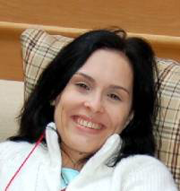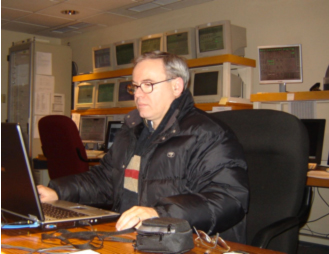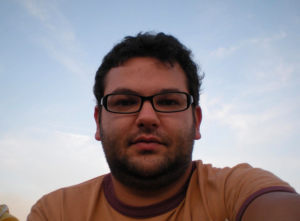
PhD: Georg-August University of Goettingen, Germany (2001)
Research Area: compact binary evolution, white dwarfs, protoplanetary disks, planet formation.
Publications: ADS
Telepone: (+56 32) 299 5518
email: This email address is being protected from spambots. You need JavaScript enabled to view it.
About my research: My main research areas are the evolution of close compact binary stars and protoplanetary disks. In both fields I combine theoretical modeling with observational surveys to constrain crucial parameters. For details see links to protoplanetary disk and compact binary star group.
See my research in: Cataclysmic Variables - Evolution of Close Compact Binary Stars and SN Ia Progenitors - Substellar Objects - Massive Stars - Protoplanetary Discs - Variability (Astrostatistics)

PhD: PhD en Ciencias Físicas, Instituto de Astrofísica de Canarias, España (2002)
Research Area: observational cosmology, strong gravitational lensing, microlensing, active galactic nuclei, accretion disks, galaxy groups and clusters, high redshift galaxies, dark matter, spectroscopy
Publications: ADS
Telephone: (+56 32) 250 8461
email: veronica.motta at uv.cl
About my research: My research interest is related to the dark matter content in our universe, both at small and large scale. I use gravitational lensing (micro, strong, and weak) in areas as different as the cosmological distance scale, the large scale matter distribution in the universe, mass distribution of galaxy groups and clusters, the physics of quasars, and galaxy structure. I take advantage of multi-wavelength observational data and theoretical models to constrain the properties of gravitationally bound objects at different redshifts.
Teaching: MSc. course, Advanced Course on Extragalactic Astrophysics, PhD.
course, thesis project
See my research in: Gravitational Lensing - Active Galactic Nuclei

PhD: Sofía University, Bulgaria (2000)
Research Area: stellar formation, stellar clusters, Milky Way galaxy, infrared astronomy, very low mass stars, brown dwarfs, cool atmospheres
Publications: ADS(full) - ADS (refereed)
Telephone: (+56 32) 250 8303
email: radostin.kurtev at uv.cl
Webpage: http://rkurtev.wix.com/rkurtev
About my research: My principal research is focused on the study of resolved stellar populations and young stellar clusters in the Milky Way galaxy, stellar formation and variability. My recent research focuses on the properties of the lowest mass stars and coldest brown dwarfs. I am particularly interested in characterizing and understanding the cool atmospheres as well as searching for multiple systems and monitoring BD variability in order to understand atmospheric dynamics–essentially weather.
Teaching: General astronomy – undergraduate, Advanced stellar astrophysics - graduate
See my research in: Substellar Objects - Planet and Star Formation - Clusters and Associations - Field Population - Variability

PhD: Louisiana State University (1990)
Research Area: Electron-electron Interaction, Doubly Excited Rydberg States in Atoms, Slater integral Symmetry
Telephone: (+56 32) 250 8302
email: quintin.molina at dfa.uv.cl
About my Research: In Atomic Physics, the study of Doubly Excited States of Atoms, particularly the electron-electron interaction in Rydberg States. Other Interest: Experimental Physics teaching at freshmen courses and in general teaching Physics at freshmen courses.
Teaching:
Mechanics II, for Physics and Astronomy Students
Physics, for Mathematics students.
Modern Physics, for Informatics Civil Engineering students
Physics Introduction, for Physics and Astronomy students.
Physics I, for Biomedics Civil Engineering students.
See my research in: Particle Physics

PhD: Université de Nice Sophia-Antipolis, Francia
Research Area: Massive stars, Be and B[e] stars, stellar interferometry, radiative transfer
Telephone: (+56 32) 250 8301
email: samer.kanaan at uv.cl
About my research: My main research area focuses on Be and B[e] stars. I mainly use VLTI the infrared interferometer located in the north of Chile. Interferometry is a unique technique that allows us to reach high angular resolution. Using this technique we are able not onlu to measure the size, but also the kinematics of celestial objects. Moreover I use different radiative transfer codes to analyse the observational data (SIMECA, MC3D, HDUST).
Teaching: Astrostatistics, IDL, Interferometry
See my research in: Massive Stars - Data Bases, Surveys and Virtual Observatory





